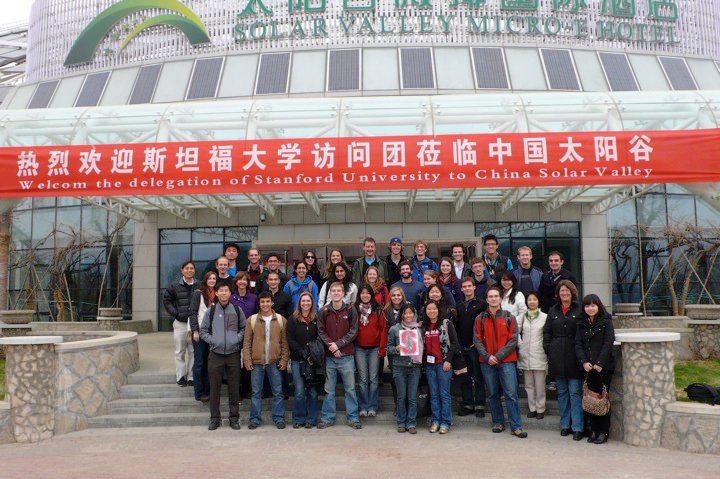China is building an ambitious “Solar Valley City” as a new national center for manufacturing, research and development, education, and tourism around solar energy technologies. as part of the Chinese government and industry’s efforts to promote clean energy technology and grow the nation’s global market share (see video below beginning at 10 seconds).
Solar Valley City is located in Dezhou, Shandong Province, where I visited last month as part of a delegation from Stanford University, and it is unlike any city you’ve seen before. The city houses over 100 solar enterprises including major firms like Himin Solar Energy Group Ltd, the world’s largest manufacturing base of solar thermal products, and Ecco Solar Group. According to reports, around 800,000 people in Dezhou are employed in the solar industry, or one in three people of working age.
“China’s solar thermal industry and Himin’s complete industrial chain are examples for the rest of the world. That sounds brash, but it’s true,” said Himin’s CEO Huan Ming in 2009, now one of China’s richest men. Himin specializes in solar thermal technology, producing over twice the annual sales of all solar thermal systems in the United States, and it is quickly expanding into solar photovoltaics and other technologies.
Himin’s portion of Solar Valley comprises nearly 1000 acres, where the company is currently constructing its manufacturing center, research and development center, education and training center, apartment complexes, and more. These facilities will host the 4th International Solar Cities Congress this year and boast a giant “solar architecture” hotel.
The Chinese government has offered substantial support for the project, including preferential tax benefits and other supporting policies, although the specifics are largely unknown. “The municipal government attaches great importance to the development of green energy,” said the County Level Inspector of Dezhou People’s Congress.

Our Stanford “China Energy Systems” class delegation visiting China’s Solar Valley City (I’m in the front row, fourth one from left)
Solar Valley City has similarities to China’s new “Electricity Valley” in the city of Baoding, which has consciously modeled itself after Silicon Valley. The city has transformed itself from an automobile and textile town into one of the fastest growing hubs of wind and solar energy equipment in China, housing nearly 200 renewable energy companies.
Overall, this project is yet one more example of how China is moving rapidly to lead the global clean energy industry while the United States falls behind. China is already the world’s largest manufacturer of solar panels and wind turbines, and it is poised to lead in advanced batteries, high-speed rail, hybrid and electric vehicles, nuclear, and advanced coal technology.
As my colleagues and I documented in our “Rising Tigers, Sleeping Giant” report last year, China and other Asian nations will out-invest the United States in the clean energy sector sector by over three to one over the next five years, a finding that was recently confirmed by a large Pew report, “Who’s Winning the Clean Energy Race?” As a group of ten U.S. Senators recently wrote in a letter to Senators Kerry, Graham, and Lieberman:
“We know that other countries, in particular China, have already started to vie for leadership in the new clean energy economy. China has already become the world’s leading manufacturer of wind turbines and solar panels. This is a contest that America cannot afford to lose. Our nation’s economic future depends both on our global competitiveness and access to reliable energy sources. We must not allow our nation to become dependent on foreign clean energy industries or squander the opportunity to compete successfully in the global clean energy marketplace.”
What will it take for the United States to lead the global clean energy industry? Find out more in my article, “Winning the Clean Energy Race: A New Strategy for American Leadership,” and check out the full list of recommendations in our report.

